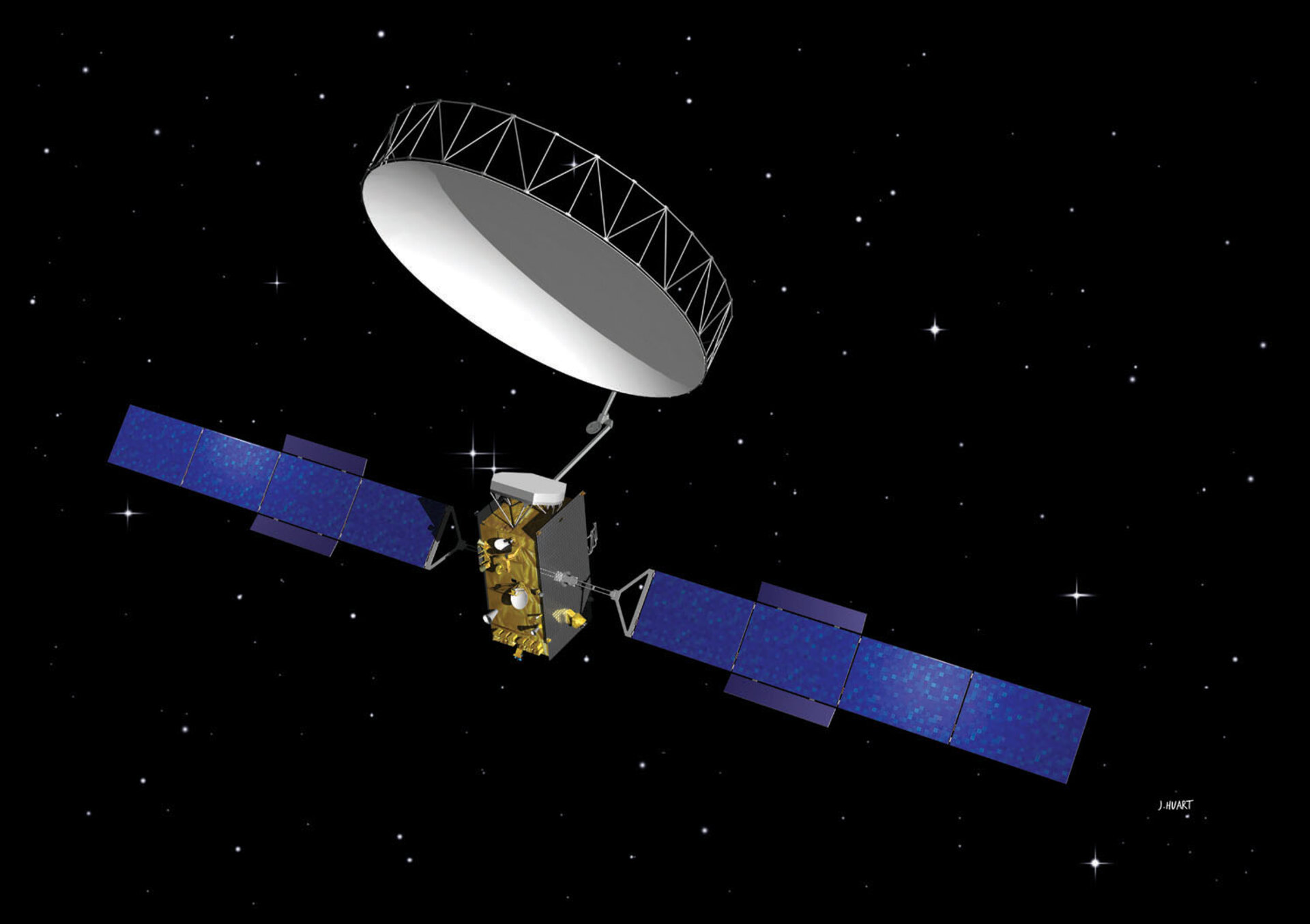Framework for the ESA Alphasat Programme
The primary objective of ESA under the Alphasat Programme is to facilitate an early first flight and in-orbit validation of the Alphabus platform, currently under development with industry.
This objective will be achieved in conjunction with a commercial operator who will utilise the protoflight Alphabus platform in the implementation of his operational payload.
To this end both parties will bring substantial funding to realise this mission. In addition to the operational payload, ESA will also provision three Technology Demonstration Payloads (TDPs) for embarkation on Alphasat. These will constitute less than 20% of the total payload embarked.
Following an extensive selection process, Inmarsat Global Ltd has been selected as the Preferred Operator with whom to embark on this programme. The contract was finalised early in November 2007.
Inmarsat 'Geomobile' mission
Following the successful implementation of the Inmarsat IV satellite series, Inmarsat is now able to deliver the new BGAN (Broadband Global Area Network) family of services, which provide a wide range of high data rate applications to a new line of user terminals for aeronautical, land and maritime markets.
With the Alphasat mission, Inmarsat will extend the capabilities of this Geo-mobile infrastructure, both in terms of performance and capacity, resulting in an enhancement of the current services and additional capacity for new services.
The Alphasat mission definition is based around two main service types:
- BGAN directional (as currently provided by Inmarsat IV)
- BGAN Omni-directional (including handheld services)
Alphasat will be capable of accessing the additional two 7 MHz sections of L-band spectrum allocated at WRC-03, which were not available to the Inmarsat IV satellites when originally specified.
Implementation of this Geo-mobile application necessitates an adaptation of the nominal Alphabus platform design to allow a 90-degree rotation of the satellite flight orientation (for better accommodation of the feed/reflector configuration) and the accommodation of the large deployable reflector.
Both these adaptations will be offered as options in the future Alphabus portfolio.
Technology Demonstration Payloads
Following several technology studies and preliminary accommodation activities, three TDPs have been selected for flight on Alphasat. These are:
- an advanced laser communication terminal to demonstrate GEO to LEO communication links at 1064 nm
- a Q-V band communications experiment to assess the feasibility of these bands for future commercial applications
- an advanced star tracker with active pixel detector
Early flight of these elements will provide invaluable data to support their future applications.
Benefits of the Alphabus & Alphasat programmes
- The Alphabus Programme is fast consolidating the future face of High Power European Telecommunications Satellites
- It is successfully combining the skills of the two major European Telecom Satellite providers in a common goal
- The significant interest of several major International Commercial Operators in participation to the Alphasat programme has significantly enhanced the credibility of this new industrial product line
- Realisation of the Alphasat mission will be a significant step forward in the European (and world) Satellite capabilities
- Alphasat will bring with it the opportunity for new services and applications, plus associated terrestrial infrastructure


